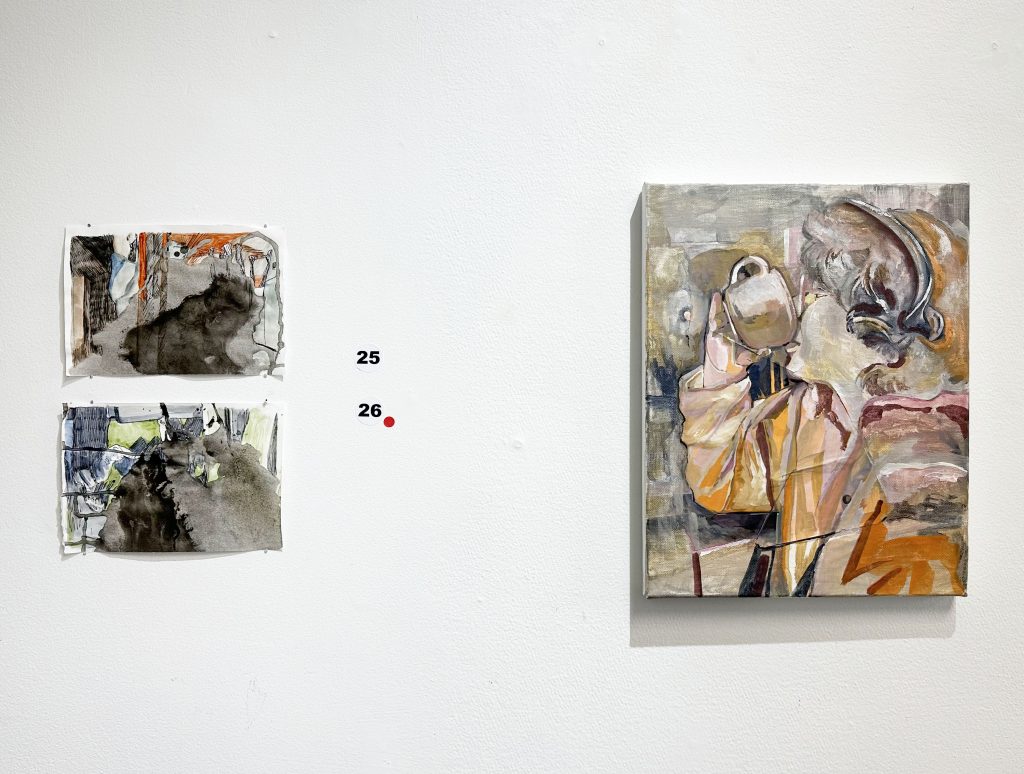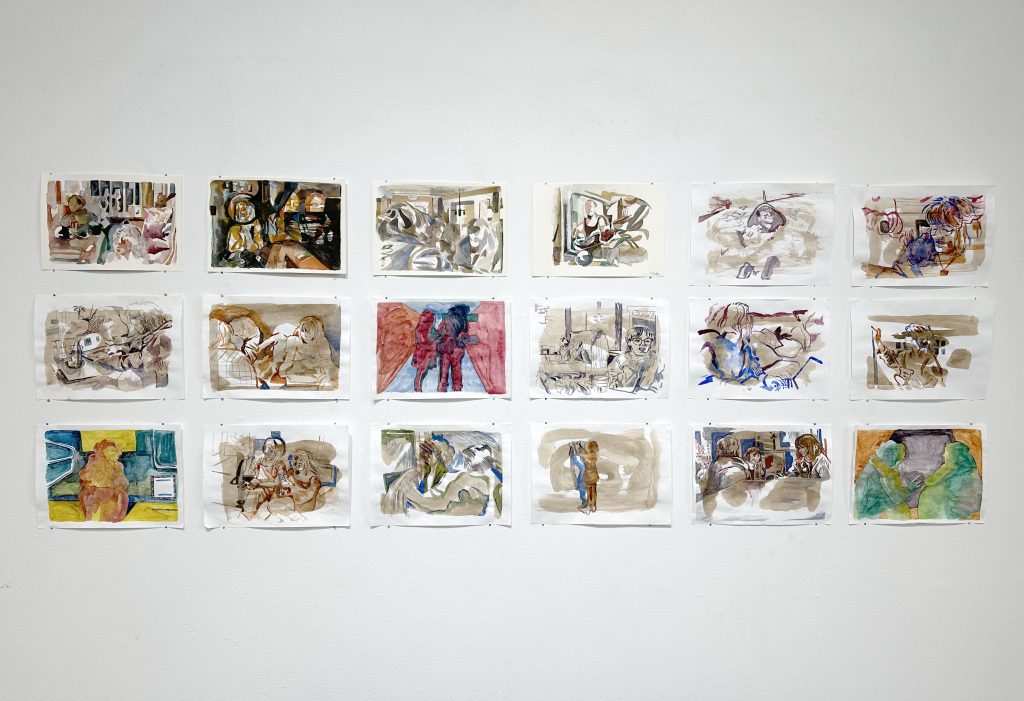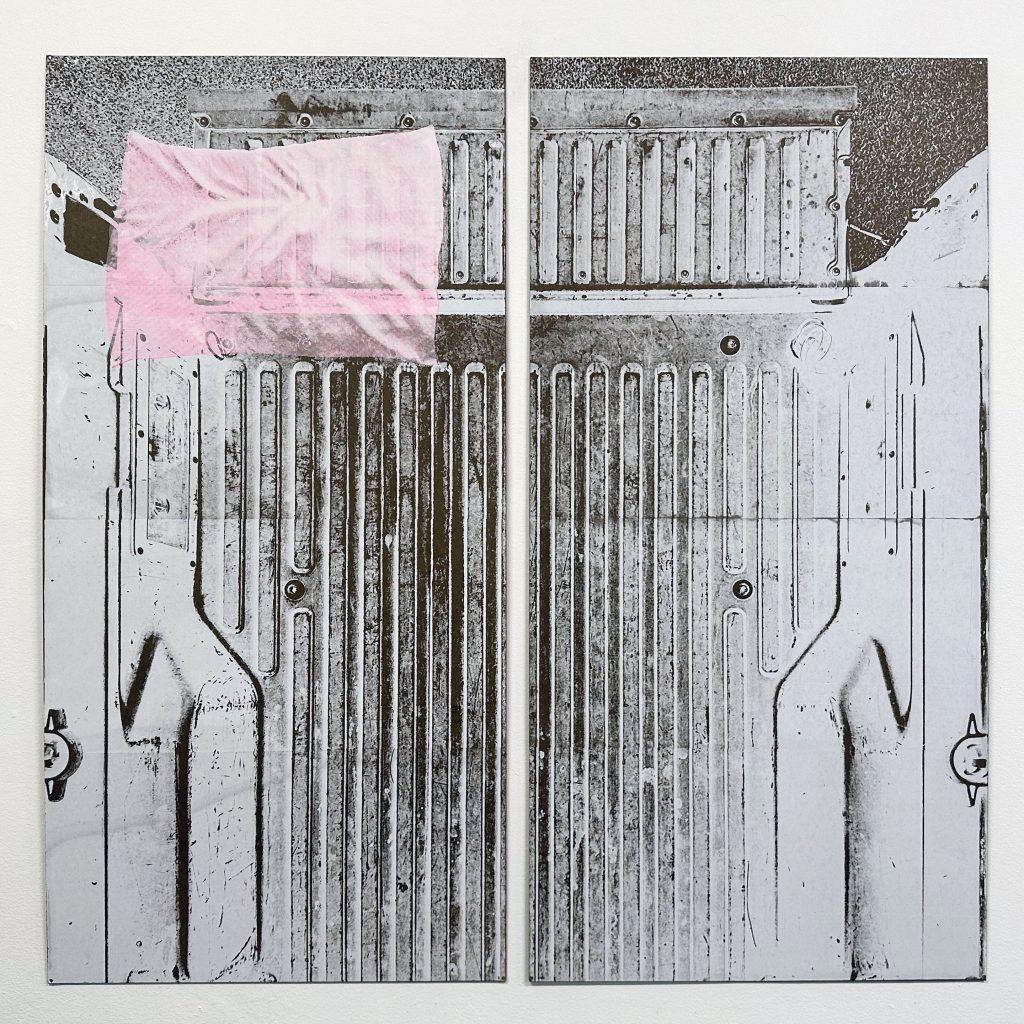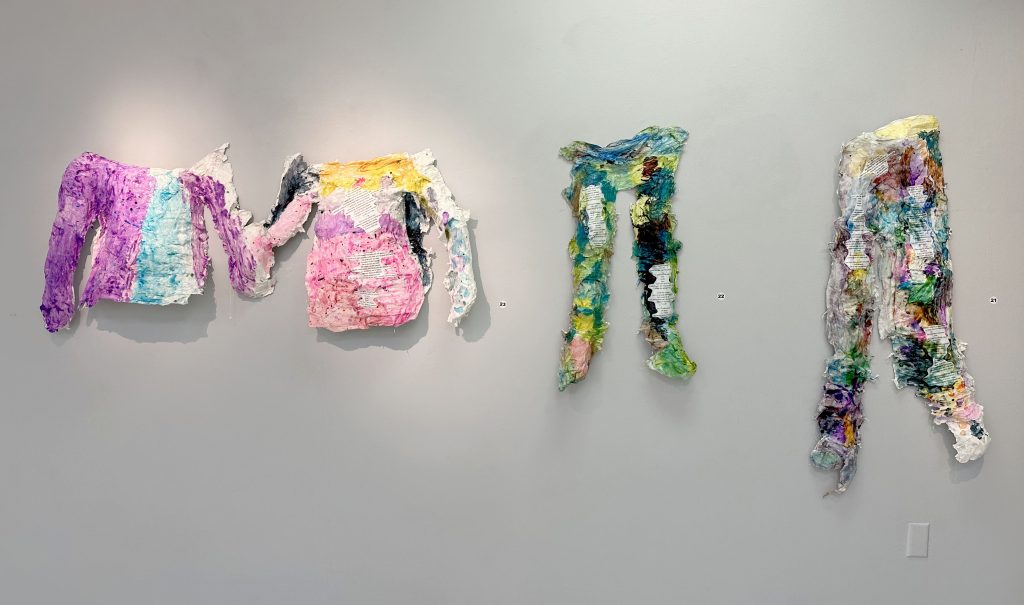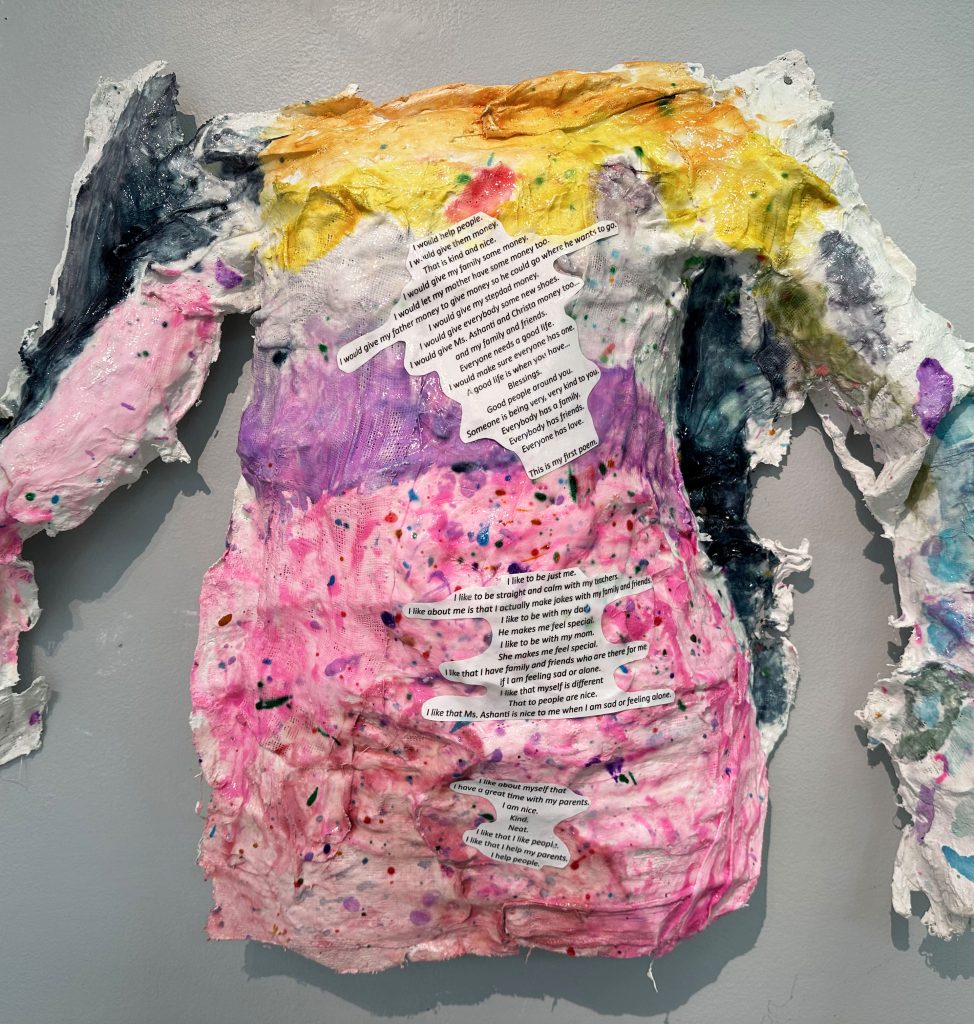

Hillary Mushkin, “Groundwater”, 2024, Four-channel video installation, wall drawing, sound and “The River and the Grid”, 2024 Artist’s book: ink, watercolor, graphite, and glue on paper

Woven work by Sarah Rosalena

“Source”, 2023 by Lez Batz (Sandra de la Loza and Jess Gudiel)- Mixed media installation including seventy felt bat masks, baleen whale cardboard puppet, graphic mural and single- channel video
Currently on view at the Armory Center for the Arts is From Ground Up: Nurturing Diversity in Hostile Environments. For the exhibition, part of PST ART: Art & Science Collide, the artists use a variety of materials, cultural practices, and traditions to explore aspects of our changing environment.
From the gallery-
What can seeds tell us about the future? Seeds and the plants that grow from them have provided us with food, clothing, shelter, and medicine for millennia. For just as long, humans have used sciences, technologies, myths, and art to peer into an imagined future. As we stare out toward our own future, one threatened by climate change and complicated by social unrest, the From the Ground Up: Nurturing Diversity in Hostile Environments exhibition looks to the seed—such as those seeds that lie at the bottom of the forest floor waiting for the cyclical fire season that promotes new growth and diversity to sprout—for inspiration and guidance on how to navigate current and coming hostile environments.
From the Ground Up presents works by 16 contemporary artists and artist teams who explore diverse technologies, histories of contested spaces, and traditional understandings of nature as they imagine alternative, sustainable futures. Organized for the Armory by curator Irene Georgia Tsatsos, the exhibition bridges familiar distinctions between art and science while exploring practices and traditions that predate contemporary understandings of those disciplines. In this exhibition, artworks, knowledge traditions, and histories converge in space and across time.
Artists in the exhibition- Charmaine Bee, Nikesha Breeze, Carl Cheng, Olivia Chumacero, Beatriz Cortez, Mercedes Dorame, Aroussiak Gabrielian, iris yirei hu, Lez Batz (Sandra de la Loza and Jess Gudiel), Malaqatel Ija, Semillas Viajeras, Seed Travels, Hillary Mushkin, Vick Quezada, Sarah Rosalena, Enid Baxter Ryce, Cielo Saucedo, Marcus Zúñiga
Below are a few additional selections and information on the work from the gallery-

Nikesha Breeze, “Stages of Tectonic Blackness: Blackdom”, 2021, Dual-channel video with sound

Nikesha Breeze (they/them) is a direct descendant of Blackdom, a homesteading community founded by thirteen African Americans near Roswell, New Mexico in 1903 that existed until about 1930. This video portrays a site-specific, collaborative dance ritual that honors the landscape and grieves the transgressions against Black and Indigenous communities at Blackdom.

Enid Baxter Ryce, “Shed (Mapping the Devil’s Half Acre)”, 2024, Mixed media, including hand-printed silk, dried plants, hand-printed cotton, antique tobacco sticks, cherry wood, cedar wood, glass, botanical inks, papers, crates

Enid Baxter Ryce with Luis Camara, “Devil’s Half Acre Tarot”, 2024, Hand-processed botanical pigments on paper
Dried plants such as indigo and woad, handmade books and maps, tarot cards and runes, and glass jars of plant-based pigments are among many tools of early scientific exploration and pre-scientific divination. Enid Baxter Ryce (she/her) has assembled these elements of medieval science into a contemporary witch’s office, adorned with fabrics painted with inks and dyes made from plants she grew from seed.

Aroussiak Gabrielian, “Future Kin”, 2024, Soil, video, sound, ceramics

In Future Kin, Aroussiak Gabriellian (she/her) connects a composting ritual to the life cycles of humans, the biome in our digestive tracts, and the bacterial, fungal, and animal life that emerges from decomposing organic matter. Undulating hands gently caress composted soil, suggesting human engagement, empathy, and awareness of ecological interconnectedness.

iris yirei hu, “mud song dream sequence”, 2024, Video and rammed earth; animation by Shoop Rozario

iris virei hu (she/her) uses diverse media to share her journeys with all living beings, whom she understands to be inextricably linked. Her practice is rooted in “collaborative optimism,” in which trauma can inform healing, solidarity, creativity, and liberating futures for folks who are Indigenous, Black, and people of color.

Olivia Chumacero, “Dispersing Time”, 2024, Plant pigments, ink, organic acrylic, burlap, muslin, manzanita branches, feathers, Cahuilla acorn harvest song

Indigenous cosmology recognizes trees as human relatives. Olivia Chumacero (Rarámuri, she/her) offers a portrait of an oak downed by wind and rain, yet alive with a lush canopy and deep roots. She compares the tree’s resilience to that of Indigenous peoples, whose lines of existence have been disrupted yet not destroyed. Following this exhibition, the piece – which is an offering to seeds – will be buried in the Sequoyah National Forest.
This exhibition closes Sunday, 2/23/25. The gallery is open Fridays 2-6 PM Saturdays and Sundays 1-5 PM.






























































